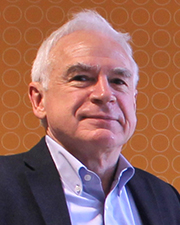



Boston, MA HFA Architects and Engineers and LaFreniere Architects are joining forces to help clients seize new opportunities in mixed-use and multifamily residential development.
The strategic alliance combines HFA’s fully integrated approach to architecture, engineering and construction with LaFreniere’s expertise in designing apartments, condos, hotels and other buildings that encourage engagement. LaFreniere Architects was founded by John LaFreniere, AIA, NCARB, principal, who studied sociology at Cornell University before earning his master’s degree in architecture from Harvard.
Services include:
• Full service architectural and interior design;
• Development feasibility studies;
• Site planning and 3D modeling;
• Structural and MEP/FP engineering;
• Permitting assistance; and
• Construction administration.
Collaborating on multifamily projects in New England has already been an immediate win-win for both firms, said Ed Damphousse, an HFA client partnerships lead. “HFA has been able to rapidly accelerate its growth into the mixed-use and multifamily markets, with existing and new clientele, by elevating its expertise through its alignment with LaFreniere Architects,” he said. “HFA provides LaFreniere with additional horsepower, integrated in-house engineering, and the ability to pursue larger projects in an expanded geography. Working together has been seamless and we are extremely excited about what the future holds for this collaboration.”
The two entities will continue to operate independently, but their collaborative work will run through HFA’s 50-person studio in Franklin, Mass., under the guidance of Aksel Solberg, HFA development design studio lead, AIA, NCARB, and LaFreniere, who is based in Cambridge. Additional key team members include HFA’s James Owens, vice president, AIA, NCARB, and Giancarlo Botazzi, discipline lead/senior structural engineer, P.E., SECB; as well as LaFreniere Architects’ Sadmir Ovcina, a veteran architectural designer.
“The multidisciplinary collaboration stands to help developers cope with one of their biggest challenges–rising construction costs,” LaFreniere said.
“When you work with a close-knit team with broad-based expertise, you’re more likely to have well-coordinated design and construction documents, fewer change orders and a faster process.”
Integrative collaboration is even more critical now that complex housing engineering systems are set to play a more prominent role, the architect explained. In the Northeast and around the country, tough new building codes call for fresh-air ventilation, unified heat pump systems, extensive building insulation and other changes. “Efficient, integrated engineering has become much more important–you have to make sure these new systems aren’t fighting each other,” LaFreniere said. “There’s a staggering amount of detail that must be thought through during the design process.”
In addition, the alliance builds proactive cost-containment strategies into the planning process from the outset, Damphousse said. “Right out of the gate, the HFA and LaFreniere teams see these projects as business challenges, not just architectural ones,” he said. “The goal is to design the building to the requirements of the pro forma, not ‘value engineer’ late in the game.”
Multifamily and mixed-use properties also need to stand out in today’s highly competitive marketplace, marked as they are by rooftop decks, hotel-like lobbies, open-floorplan coworking spaces and more, LaFreniere notes. “Today, granite countertops, open kitchens and high-end fixtures are becoming the norm even in entry-level housing,” he said. “And in general, common areas need to be much more inviting. We are constantly looking for ways to enliven these experiences and create community. We’re also learning valuable lessons about how to execute these strategies cost effectively.”



